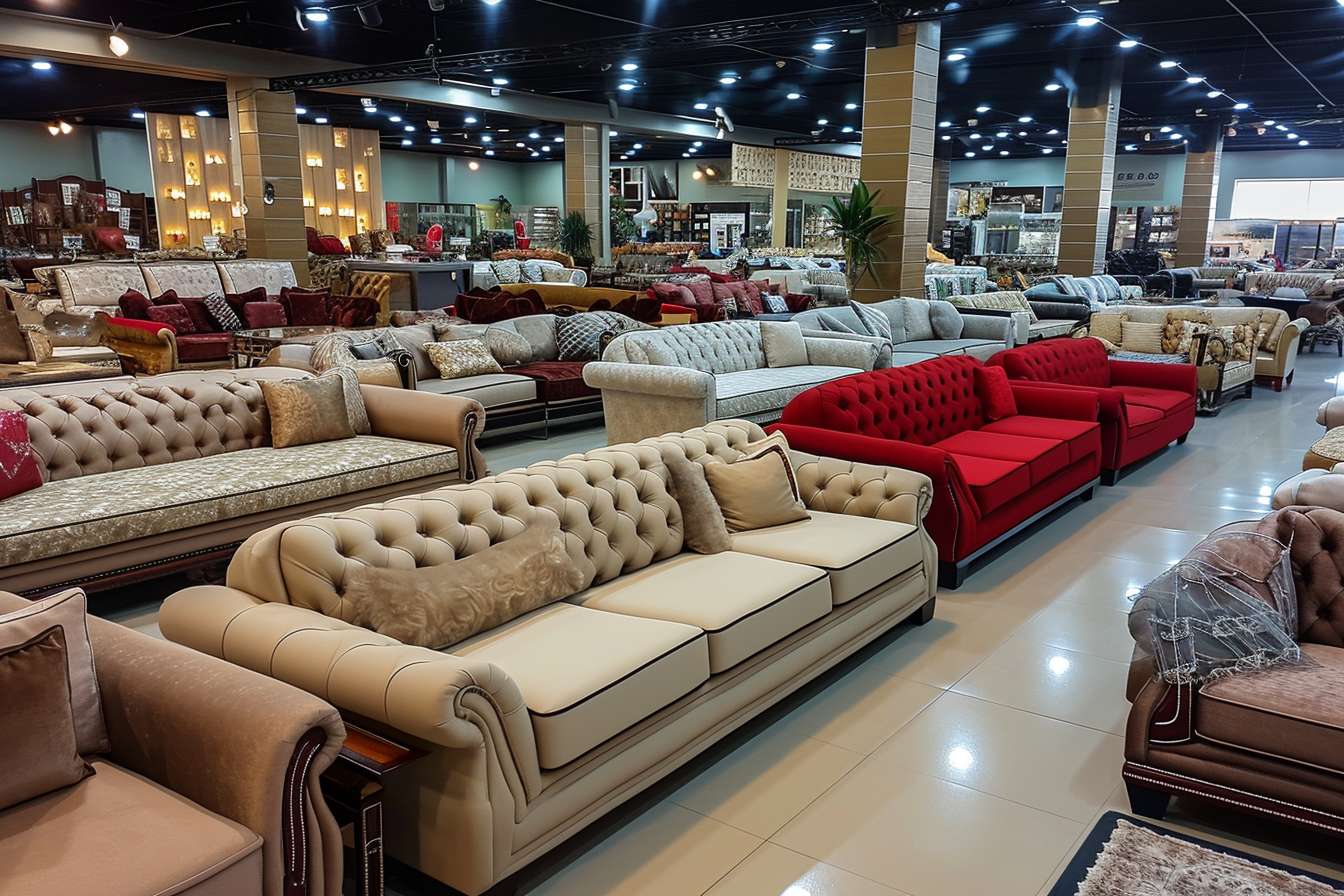Practical Insights on Finding and Evaluating Used Furniture
In today's environmentally conscious market, sustainable secondhand furniture has become a popular choice for many homeowners who want to enhance their living spaces while protecting the environment. This type of furniture is typically made from recycled or upcycled materials, which not only adds personality but also helps reduce environmental impact. By choosing sustainable secondhand furniture, you are not only investing in durable, high-quality furniture but also contributing to a greener future.

The market for used furniture continues to grow as more consumers recognize the value, uniqueness, and sustainability aspects of purchasing pre-owned pieces. Whether you’re furnishing your first apartment, upgrading your living space, or simply looking for distinctive items with character, second-hand furniture offers numerous advantages. Beyond cost savings, buying used furniture reduces environmental impact and often allows access to higher quality craftsmanship than similarly priced new items. However, successful navigation of this market requires knowledge about where to look, what to examine, and how to evaluate potential purchases.
Finding Quality Second Hand Modern Furniture
Locating quality used modern furniture requires strategic searching across multiple channels. Online marketplaces like Facebook Marketplace, Craigslist, and specialized platforms such as Chairish or 1stDibs offer extensive selections with varying price points. These digital platforms allow for convenient browsing with filters for style, condition, and location.
Physical locations remain valuable resources as well. Estate sales, consignment shops, and thrift stores frequently receive high-quality modern pieces, though these require regular checking as inventory changes rapidly. Auction houses occasionally feature modern furniture collections, particularly from designers or notable brands. For those seeking curated selections, specialized vintage or mid-century modern furniture dealers offer pre-vetted pieces, albeit typically at higher price points reflecting their expertise and restoration work.
Evaluating Sofas and More in the Second-Hand Market
Upholstered furniture demands particularly careful assessment when purchased used. Begin by examining the frame—solid hardwood frames indicate quality construction that will endure further use. Test the piece by sitting on different sections, noting any sagging, creaking, or instability that might signal structural problems.
Fabric condition requires thorough inspection: check for stains, tears, odors, and wear patterns. While minor fabric issues can often be addressed through professional cleaning or reupholstering, these additional costs should factor into your purchase decision. For leather sofas, examine for cracks, peeling, or drying, as leather repair can be costly.
Removable cushion covers offer advantages for cleaning and maintenance. Additionally, investigate the cushion filling—down, foam, or synthetic materials have different longevity profiles and comfort characteristics. Remember that upholstery cleaning or replacement represents a significant investment, sometimes approaching the cost of a new piece.
Understanding 21 Furniture: Modern Vintage Classics
The term “21 furniture” often refers to 21st-century furniture design or pieces that blend contemporary aesthetics with vintage influences. These items frequently incorporate sustainable materials, modular functionality, and clean lines inspired by mid-century modern design principles but updated for contemporary living.
When evaluating these modern classics in the second-hand market, authenticity becomes paramount. Research distinctive characteristics of specific designers or manufacturers—authentic pieces often carry maker’s marks, stamps, or labels. Familiarize yourself with signature design elements, proportions, and materials used by notable creators.
Authentic designer pieces, even when used, often maintain significant value. However, the market also contains many quality reproductions and inspired designs that offer similar aesthetic appeal at lower price points. Understanding the distinction helps establish appropriate value expectations and informs negotiation strategies.
Essential Tips for Buying a Second Hand Sofa
Sofas represent significant furniture investments and serve as centerpieces in living spaces, making their selection particularly important. Beyond aesthetic considerations, practical evaluation should include measurement verification—both of the sofa itself and your doorways, stairwells, and elevators to ensure successful delivery.
Investigate the sofa’s history when possible. Questions about the previous environment (smoking/non-smoking home, pets), duration of ownership, and reason for selling provide valuable context. For older pieces, determine whether they contain flame retardants or other chemicals of concern used in previous decades.
Consider the sofa’s cleaning requirements and compatibility with your lifestyle. Households with children or pets might prioritize stain-resistant fabrics or leather with durable finishes. Removable, washable covers offer practical advantages for high-use environments. Finally, assess whether the cushion firmness and seat depth match your comfort preferences—factors difficult to change without significant reupholstering investment.
Identifying High End Quality Furniture in Used Markets
High-quality used furniture often represents exceptional value, offering craftsmanship and materials substantially superior to similarly priced new items. Several indicators help identify premium pieces: solid wood construction (rather than particleboard or MDF), dovetail or mortise-and-tenon joinery, and full-extension drawer glides signify quality construction techniques.
Premium materials provide additional clues—kiln-dried hardwoods, genuine leather, high-performance fabrics, and quality hardware distinguish superior pieces. Examine drawer interiors, furniture backs, and undersides, as high-end manufacturers maintain quality standards throughout, not just on visible surfaces.
Brand recognition offers another evaluation tool. Research manufacturers known for quality craftsmanship such as Herman Miller, Knoll, Baker, Stickley, or Henredon. While brand alone doesn’t guarantee quality, particularly for older pieces, it provides context for expected construction standards and potential value.
Cost Considerations and Value Assessment for Used Furniture
Pricing for used furniture varies dramatically based on condition, brand, age, and market demand. Generally, expect to pay 30-70% less than retail prices for comparable new items, with antiques and designer pieces sometimes commanding premium prices due to collectability and limited availability.
| Furniture Category | Average Condition | Good Condition | Excellent Condition |
|---|---|---|---|
| Standard Sofas | $150-300 | $300-600 | $600-1,200+ |
| Designer Sofas | $500-1,000 | $1,000-2,500 | $2,500-5,000+ |
| Dining Tables | $100-300 | $300-800 | $800-2,000+ |
| Solid Wood Dressers | $150-350 | $350-700 | $700-1,500+ |
| Mid-Century Chairs | $75-150 | $150-400 | $400-1,000+ |
Prices, rates, or cost estimates mentioned in this article are based on the latest available information but may change over time. Independent research is advised before making financial decisions.
When assessing value, consider both immediate and potential future costs. Factor in delivery expenses, which can be substantial for large pieces. Evaluate potential restoration needs—refinishing wood surfaces, reupholstering, or replacing hardware—and research these costs before purchasing. For significant investments, consider professional inspection or authentication for antiques or collectible designer pieces.
The used furniture market rewards patience and research. Developing knowledge about materials, construction techniques, and design history enhances your ability to recognize quality and value. Whether seeking practical everyday pieces or statement investments, understanding how to evaluate used furniture transforms the shopping experience from uncertain guesswork to confident decision-making.




